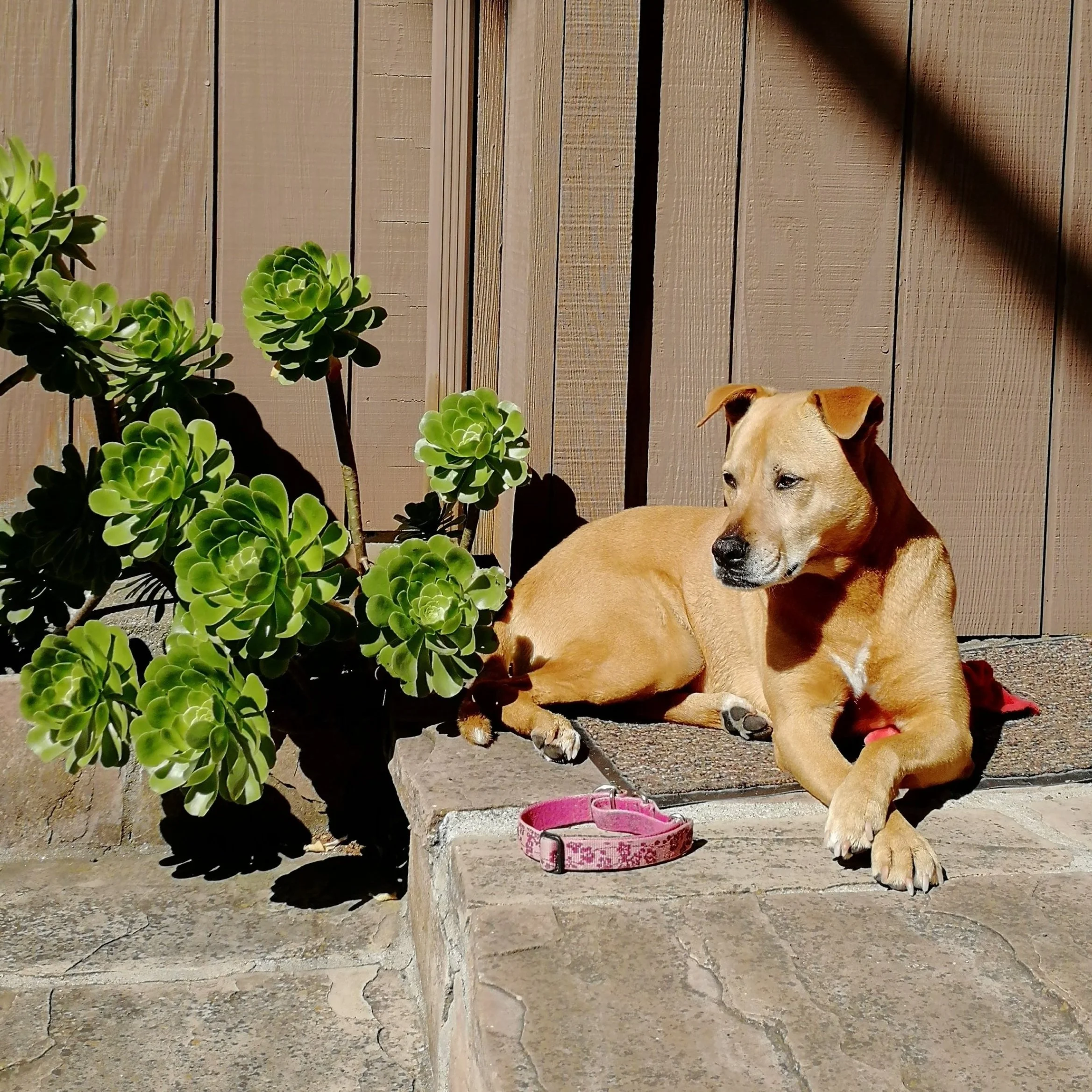Tending to Grief: How to Abandon Self-Abandonment in the Face of Grief
I’ve been grieving the loss of my 12½-year-old pup, Leila. (You can read more about what her life and loss has taught me here.)
It’s important to me to write about nurturing our grief - especially in the context of my work with clients - because when we seek appropriate outlets to acknowledge, express, release, and honor what we’re going through, we’ll be less likely to turn to food, alcohol, a toxic relationship, busyness, or something else to mask repressed pain.
Grief is a shared human experience, and we encounter it in many forms over a lifetime. We typically reserve the word grief for when we lose somebody. But several other forms of grief show up for my clients as they seek to understand why and how their food struggles developed. Sometimes they find themselves reckoning with body grief, which I wrote about here. Other times they feel a loss and longing for the acceptance, attunement, recognition, nurturing, or validation they did not receive in childhood. And still other times, they feel a deep sadness for their younger self who struggled in isolation, desperately needing the perspective and support they’re grateful to have now.
As I’ve been present to my own grief the last few months, I’ve found comfort in the eight practices, perspectives, and resources below. Over the years, they’ve found their way into both my personal and professional toolkit because I appreciate how they cater to the yin and yang of self-tending when grieving, rather than the all-or-nothing act of self-abandoning (i.e. going through the motions ignoring emotions, then crashing and numbing out).
Whatever path your grief has taken, I hope you find something helpful in the list below.
Emotions are a tunnel, not a cave. Emotions have a naturally short lifespan. Allow yourself to be with the emotions that arise without resistance or judgment, and you’ll move through them like a tunnel, returning to fresh, light-filled air once again. Conversely, fighting the emotions prolongs the pain. Thoughts such as “I don’t want to feel this” or “What’s wrong with me?” or “I should be over this by now” clip the natural ebb and flow of emotions and trap you in a spiral that leaves you feeling heavy and stagnant like you’re in a dark cave with no way out. There will be more tunnels ahead. But if you’re willing to pass through them as many times as it takes — without critique — they’ll gradually become shorter and spaced further apart.
Weave in and out. This is a grounding technique used for anxiety, but it’s helpful for any uncomfortable experience, such as grief. This practice has given me so much life recently. Imagine yourself drawing a figure eight as you weave your attention in (noticing and allowing the emotions), then out (focusing on people and the environment around you), and back in again. The figure eight metaphor contextualizes the alternating cadence of being present to the emotions when they arise — giving them outlets through crying, writing, talking, moving your body, etc. — then intentionally choosing distractions to release the intensity, like being in nature, meeting friends, watching a movie, volunteering, or immersing yourself in a hobby. The weaving can happen during a 5-minute break or over the course of a day or week.
Let two experiences be true at once. Laughter, peaceful moments, connection, and comfort can exist alongside the pain, emptiness, and sorrow. According to grief experts, it’s a misconception that letting go of our sadness disconnects us from the thing we lost. In reality, enjoying lighter moments is restorative. They give us more capacity, presence, and wholeness to endure the harder moments.
Feed yourself. Grieving depletes the body of its resources. But hunger cues may go offline for some people. For others, food becomes a source of comfort and distraction. Whether you’re eating all the sugar and carbs or nothing at all, recognize this as a time your body needs you. Radically authentic care means giving ourselves what we know we need even when we don’t feel like it. In a radical act of self-commitment, form gentle, but consistent anchors in your day by eating a simple but complete meal every 3 to 5 hours. This may be a bowl of vegetable soup, a hummus and veggie wrap, or eggs and toast. But consider the ritual of preparing your food (no matter how simple) or purchasing a meal as a step toward gently resourcing yourself.
Do what feels good to honor what you’ve lost. Acting on instinct is what’s needed here. What you do doesn’t have to make sense to anyone but you. If you lost someone or a pet, write to them, donate to a cause they believed in, make them a cake on their birthday — do whatever it is that helps you connect with and honor your loved one. I held several sound bowl ceremonies for Leila because she loved them when she was alive. In the days after, I also took her on a few “spirit walks” because I still felt her presence with me. For clients who grieve traumatic childhoods, I’ll encourage them to write a letter to their younger self providing the acknowledgment, validation, and reassurance they needed then but didn’t receive.
Share your grief. Recognize there might be others grieving your loss. Maybe they had their own relationship with the person or pet, or they care about you and are grieving for you. Acknowledging that there are others who are grieving (even if their grief looks different than yours) can help you feel less alone. And it serves as a comforting reminder that this is bigger than you; what you loved meant something to others, too.
Let yourself get curious: What am I free to do now? When we lose something or someone we loved, we focus on what we’re missing and what we can no longer do without them. As time softens the pain and you’ve been able to process your grief using some of the tools above, my wish is that you’ll be able to ask this question and feel hope and the possibility of joy return. If you need to ease into this one, return to the third bullet.
Get your hands on anything Elizabeth Gilbert. I’ve felt so much hope, inspiration, and comfort in Gilbert’s writing and speaking over the years. Her book, Big Magic, will always have a place on my bookshelf. But she’s also generously shared her experience and wisdom on love and loss in articles and conversations. I’ve included two starting points below. Gilbert says “creation is the antidote to despair.” As you consider how you want to tend to your grief, think about what you can create that feels meaningful. It could be as simple as a blocked off calendar to nap, space to connect with others, a drawing, a journal entry, or a meal.
What I have learned about grief (a must read!!)
The TED Interview podcast: Elizabeth Gilbert shows up for…everything (The whole discussion is gold, but she begins talking about grief at the 32-minute mark.)
A few other resources on grief
Anxiety: The Missing Stage of Grief by Claire Bidwell Smith
Good Grief: On Loving Pets, Here and Hereafter by E.B. Bartels
The Year of Magical Thinking by Joan Didion


